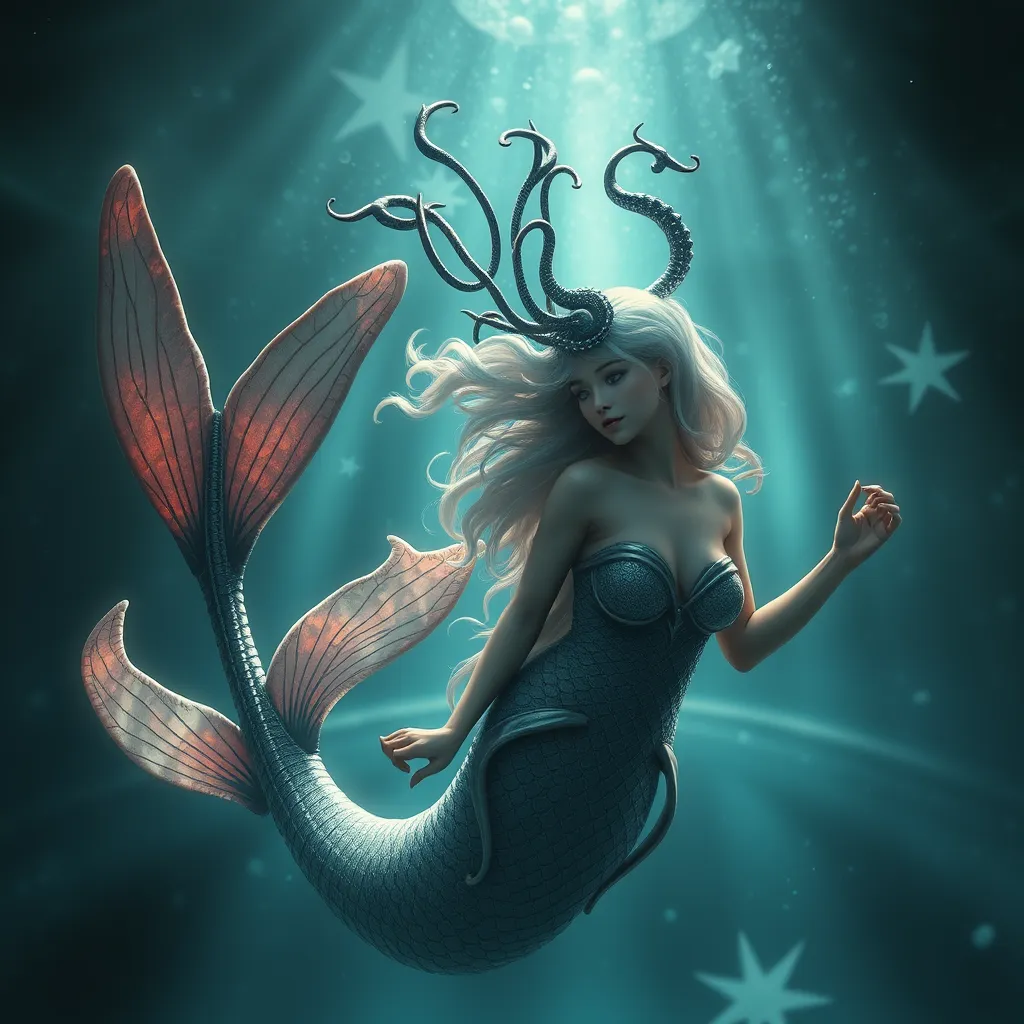Whispers from the Deep: Unmasking the Secrets of Mermaid Lore
I. Introduction to Mermaid Lore
Mermaids, enchanting beings often depicted as half-woman and half-fish, have captivated human imagination for centuries. These mythical creatures hold a significant place in folklore, symbolizing beauty, mystery, and the unknown depths of the ocean. Their allure transcends geographical boundaries, manifesting in diverse forms across various cultures. This article delves into the rich tapestry of mermaid lore, exploring its historical origins, cultural representations, and enduring significance in modern society.
II. Historical Origins of Mermaid Myths
The roots of mermaid myths can be traced back to ancient civilizations, where they were often associated with water and fertility.
A. Ancient civilizations and their mermaid stories
- Mesopotamian and Greek influences: In ancient Mesopotamia, the goddess Atargatis was depicted as a mermaid. The Greeks contributed to the lore with tales of sirens, who lured sailors to their doom with enchanting songs.
- Norse sagas and their aquatic beings: Norse mythology features the ‘mjölnir’ and ‘sága,’ beings that embody the spirit of the sea, echoing the characteristics of mermaids.
B. Evolution of mermaid tales through the ages
From ancient times to the medieval period, mermaid stories evolved, often reflecting societal values and fears. As maritime exploration expanded, so did the fascination with these water-dwelling beings.
C. The impact of maritime culture on mermaid lore
Maritime culture played a pivotal role in shaping mermaid myths. Sailors, facing the perils of the sea, often attributed their experiences to mythical creatures, cementing mermaids in nautical folklore.
III. Mermaids in Different Cultures
Mermaids manifest in various forms across different cultures, each adding unique elements to their lore.
A. European representations of mermaids
In Europe, mermaids are often portrayed as beautiful and alluring, embodying both seduction and danger. The tragic tale of the Little Mermaid is a prime example of this duality.
B. Asian interpretations: Ningyo and Jinmenju
- Ningyo: In Japanese folklore, the ningyo is a fish-like creature that brings misfortune, yet its flesh is said to grant immortality.
- Jinmenju: A mythical being with a human face on a fruit-like body, Jinmenju is another fascinating interpretation found in Japanese tales.
C. African and Caribbean mermaid legends
In Africa, the Mami Wata is a water spirit revered in various cultures, often depicted as a mermaid with great powers. Caribbean folklore features the ‘Loup-Garou,’ a shape-shifting entity with ties to mermaid myths, highlighting the blend of African and European influences.
D. Indigenous narratives and their connection to water spirits
Many Indigenous cultures have rich narratives involving water spirits that resemble mermaids, emphasizing the importance of water in their cosmologies and the connection between humans and nature.
IV. The Symbolism of Mermaids
Mermaids are imbued with rich symbolism that reflects deeper meanings beyond their enchanting appearances.
A. Mermaids as symbols of femininity and duality
Mermaids often embody the duality of femininity—beautiful yet dangerous, nurturing yet destructive. They challenge societal norms and expectations placed on women.
B. The connection between mermaids and nature
These aquatic beings symbolize the connection between humanity and nature, serving as reminders of the mysteries of the natural world and the importance of preserving it.
C. Mermaids in the context of human emotions and desires
Mermaids represent human emotions, desires, and the longing for freedom. They reflect our fascination with the unknown and the depths of our subconscious.
V. Famous Mermaid Stories and Their Impact
Mermaids have inspired countless stories, some of which have left a significant mark on literature and popular culture.
A. The Little Mermaid: Hans Christian Andersen’s tale
Hans Christian Andersen’s “The Little Mermaid” tells the story of a mermaid who sacrifices everything for love, embodying themes of longing, sacrifice, and transformation. This tale has become a classic, inspiring numerous adaptations.
B. Historical accounts and sightings of mermaids
Throughout history, sailors have reported sightings of mermaids, often attributing these encounters to fatigue or hallucination. These accounts add a layer of intrigue to mermaid lore.
C. Modern adaptations in literature and film
- Disney’s animated adaptation of “The Little Mermaid”
- Television series such as “H2O: Just Add Water”
- Movies like “Aquaman” featuring merfolk
VI. Scientific Explanations and Skepticism
As enchanting as mermaid myths are, various scientific theories attempt to explain their origins.
A. Theories behind mermaid sightings and myths
Many mermaid sightings can be attributed to misidentified marine life, such as manatees, which resemble human figures from a distance.
B. Marine life that inspired mermaid legends
Marine creatures like the dugong and the orca have been suggested as possible inspirations for mermaid legends, as sailors often mistook them for human forms.
C. The psychological aspects of believing in mermaids
The allure of mermaids can also be understood through psychological lenses, such as the human tendency to anthropomorphize nature and the desire for the fantastical.
VII. The Modern Merfolk Movement
In recent years, there has been a resurgence of interest in mermaid culture, giving rise to the modern merfolk movement.
A. The resurgence of interest in mermaid culture
People are increasingly drawn to the idea of mermaids as symbols of freedom and self-expression, leading to a vibrant community of merfolk enthusiasts.
B. Community and identity among merfolk enthusiasts
The merfolk community often celebrates creativity, with events such as mermaid conventions and meet-ups, fostering a sense of belonging.
C. The role of social media in promoting mermaid lore
Social media platforms have become vital spaces for sharing mermaid art, stories, and experiences, amplifying the modern fascination with these mythical beings.
VIII. Conclusion: The Enduring Allure of Mermaids
Mermaid lore continues to resonate deeply within human culture, representing a blend of beauty, danger, and the mysteries of the unknown. Their significance transcends time and geography, evolving with society’s changing values and beliefs. As we navigate the complexities of contemporary life, the allure of mermaids remains a timeless reminder of our connection to nature and the depths of our own emotions. The legacy of mermaids is far from over; as long as there are oceans and dreams, they will continue to whisper their secrets from the deep.



